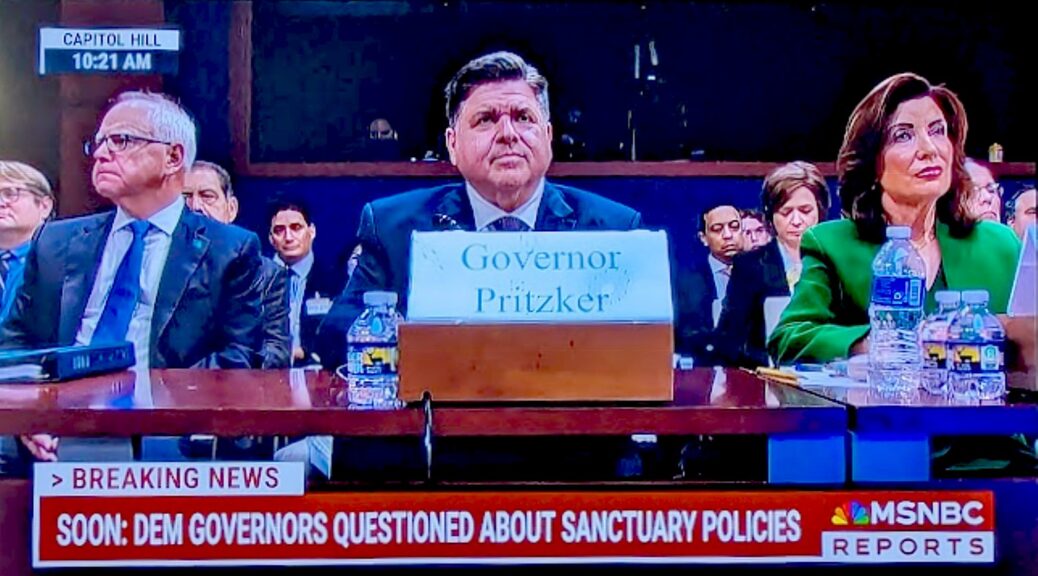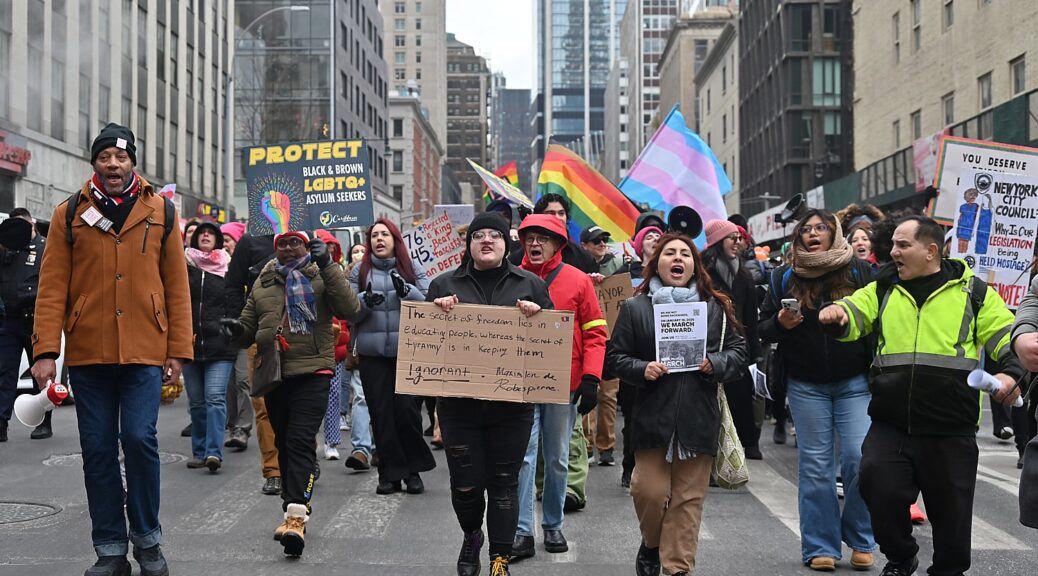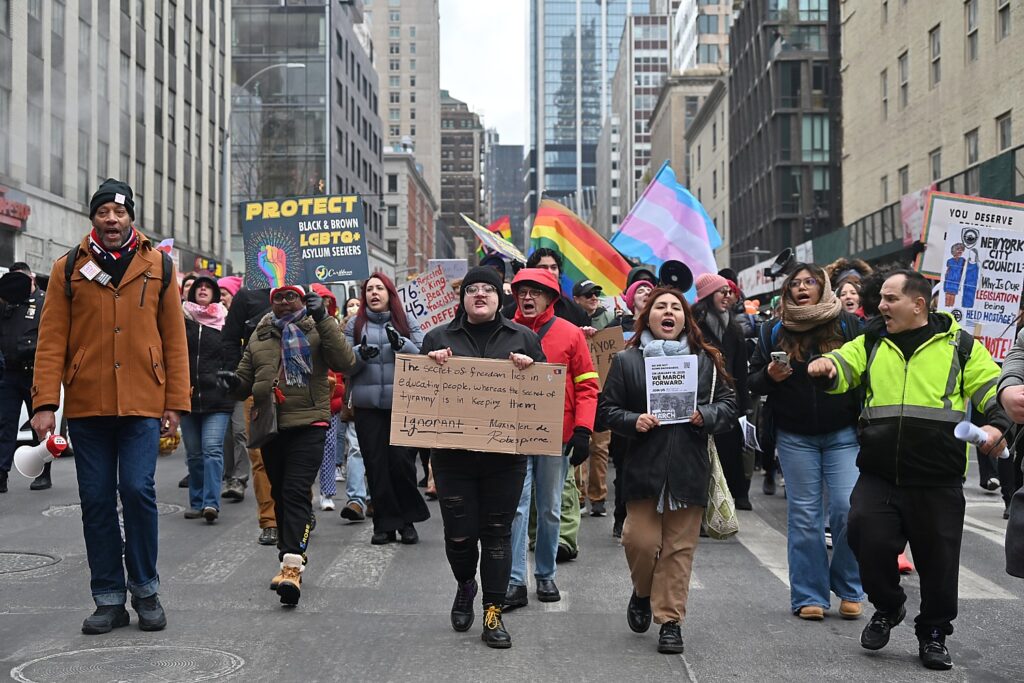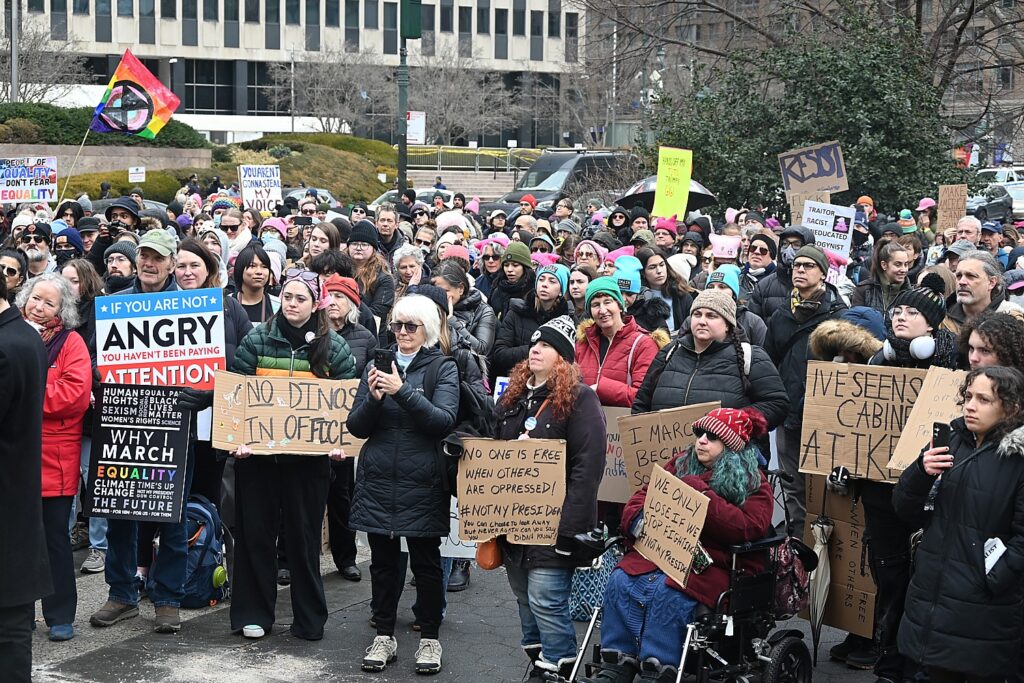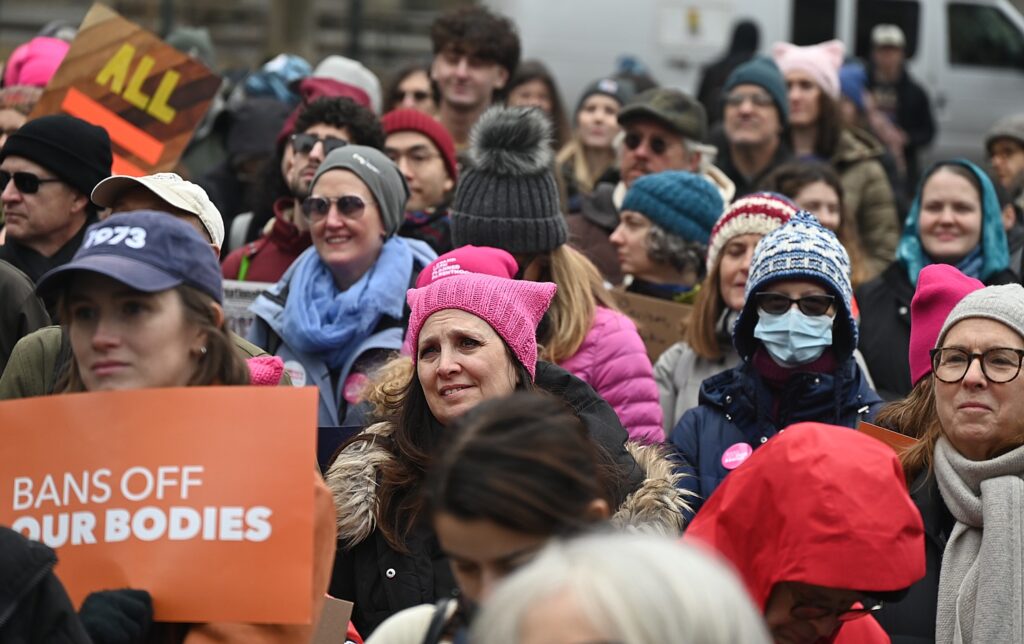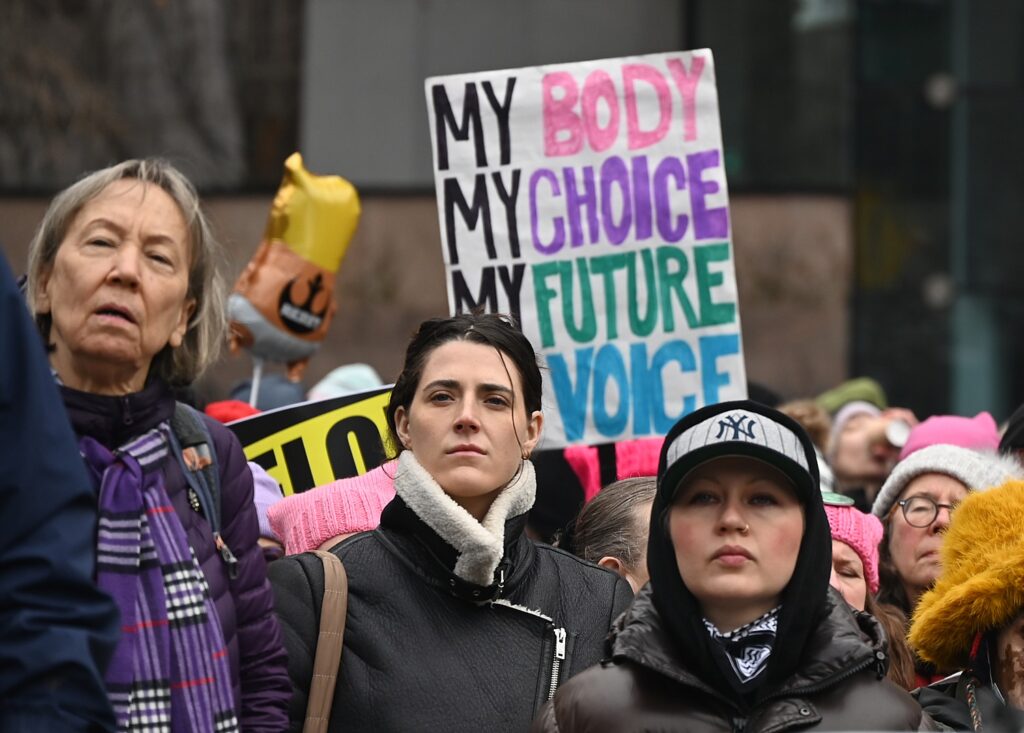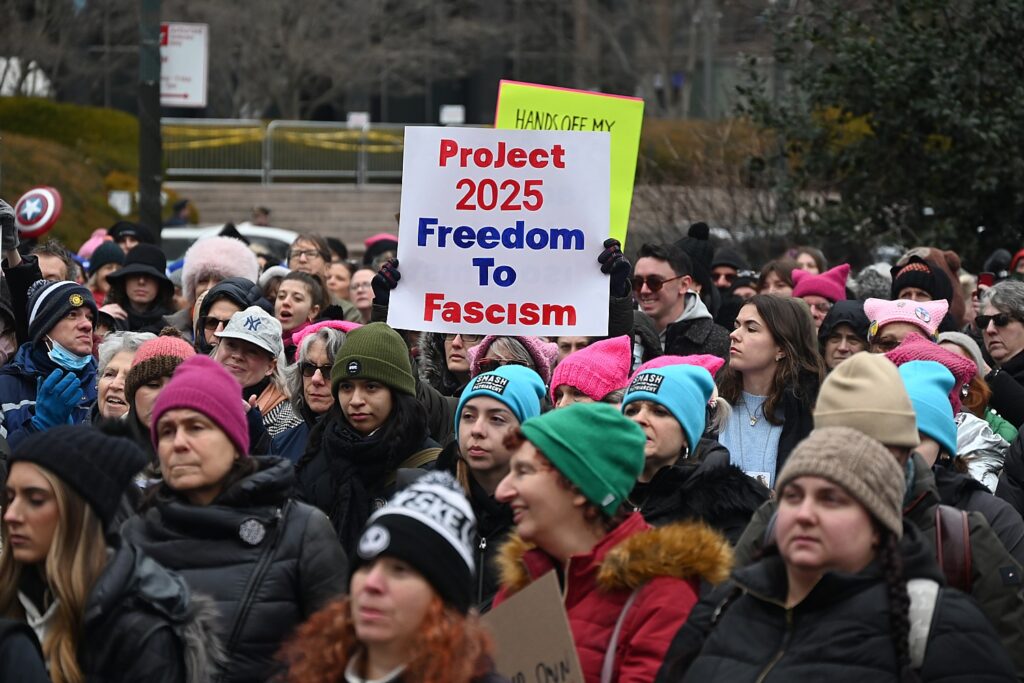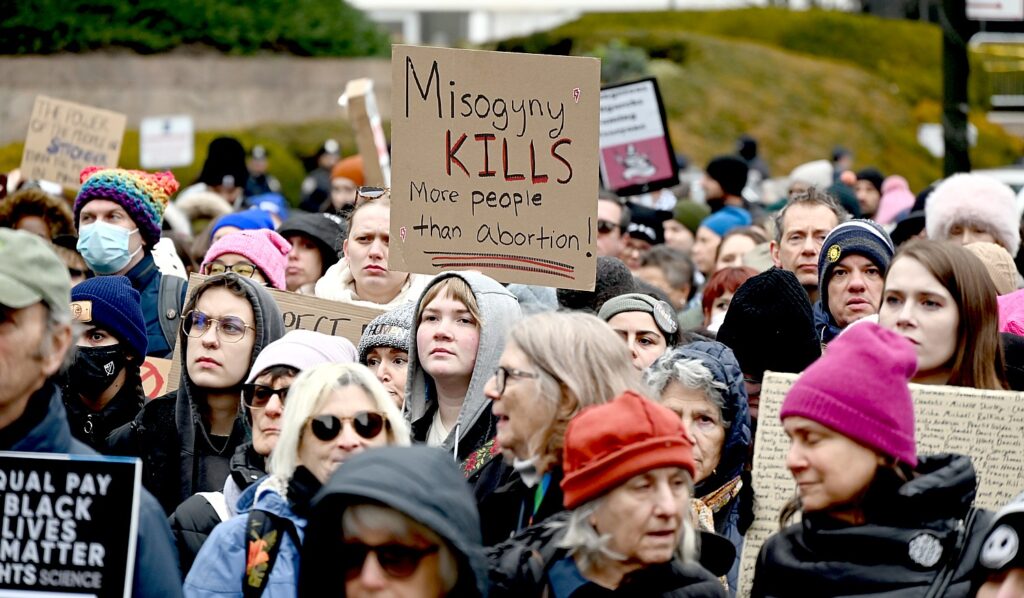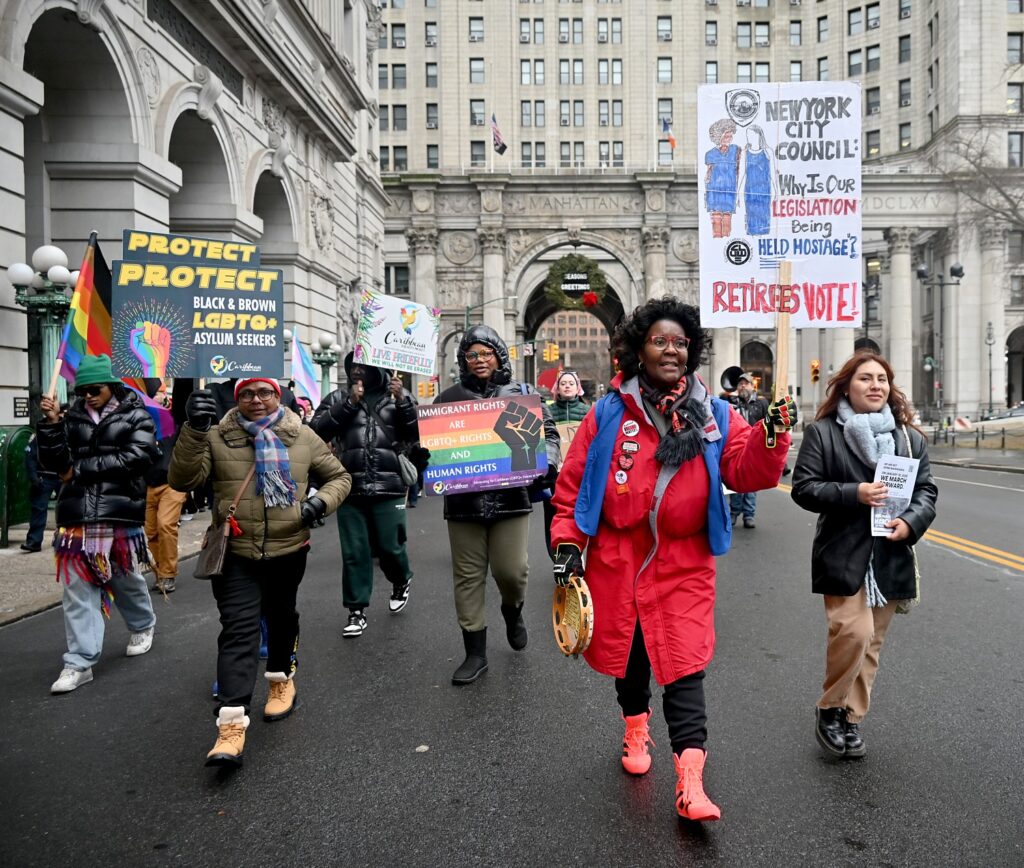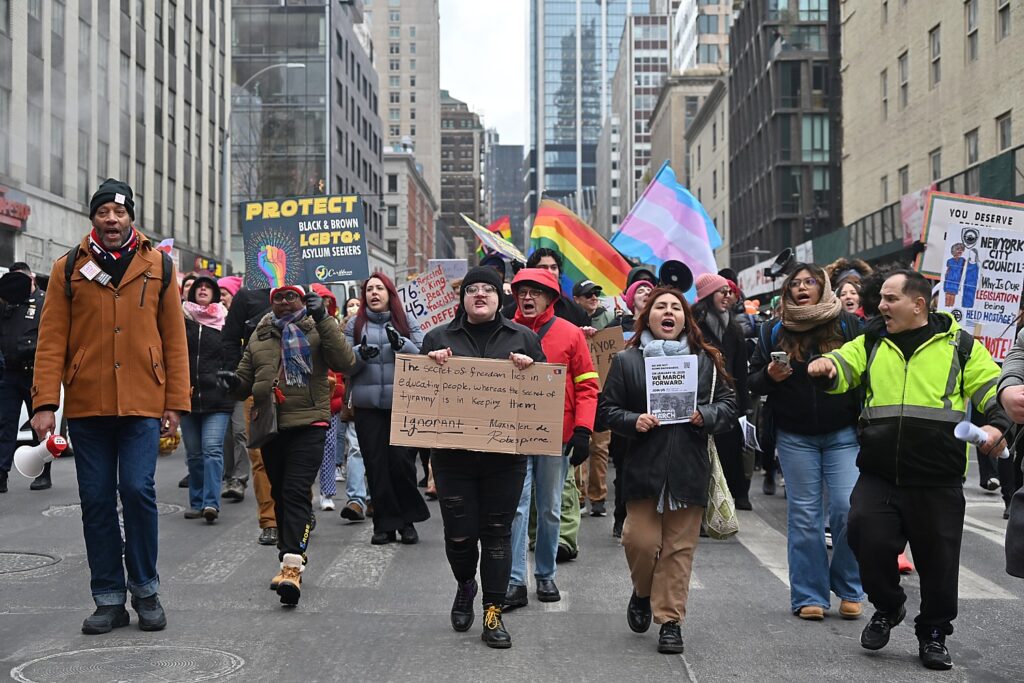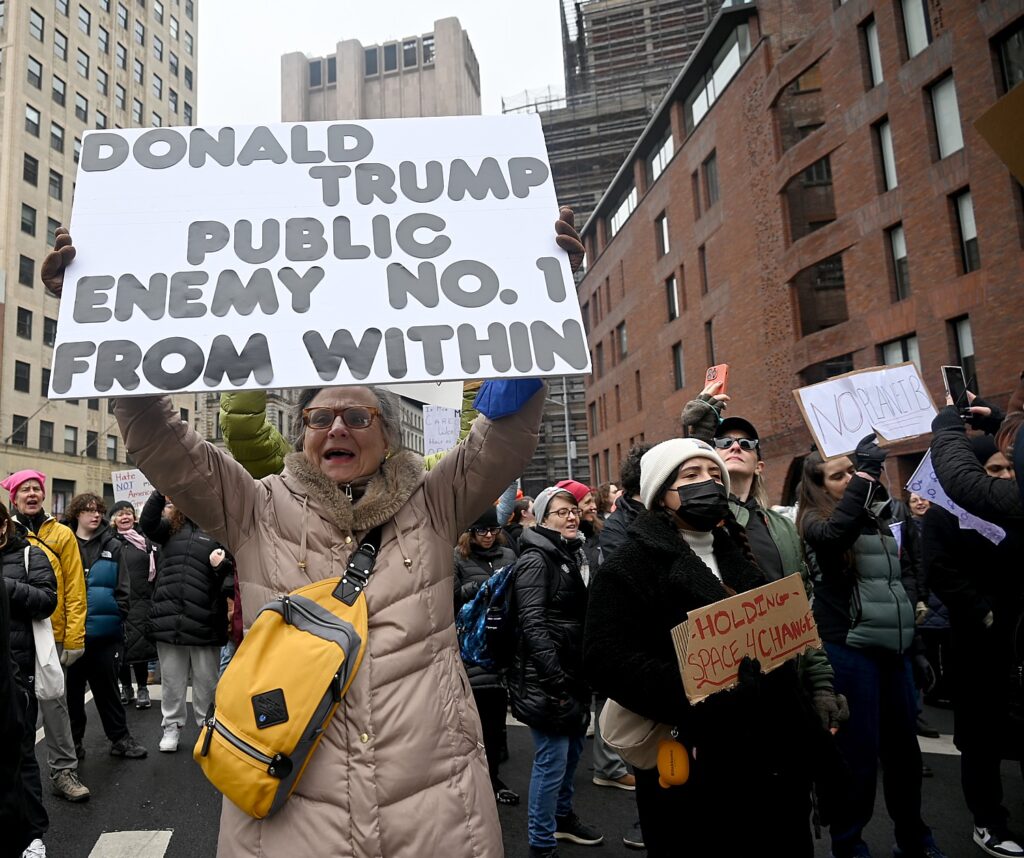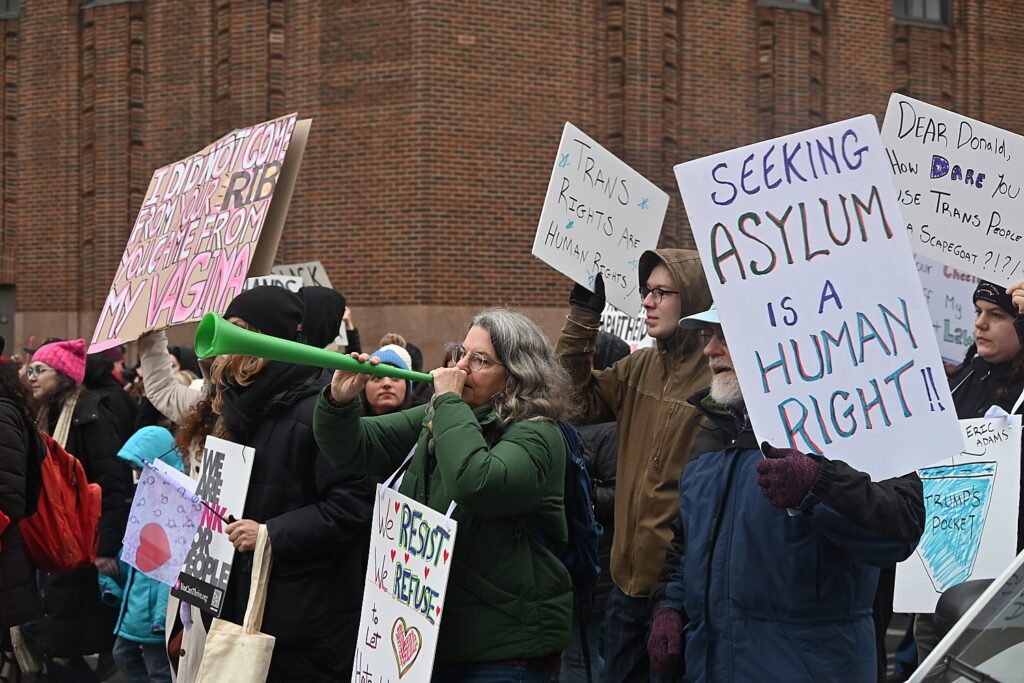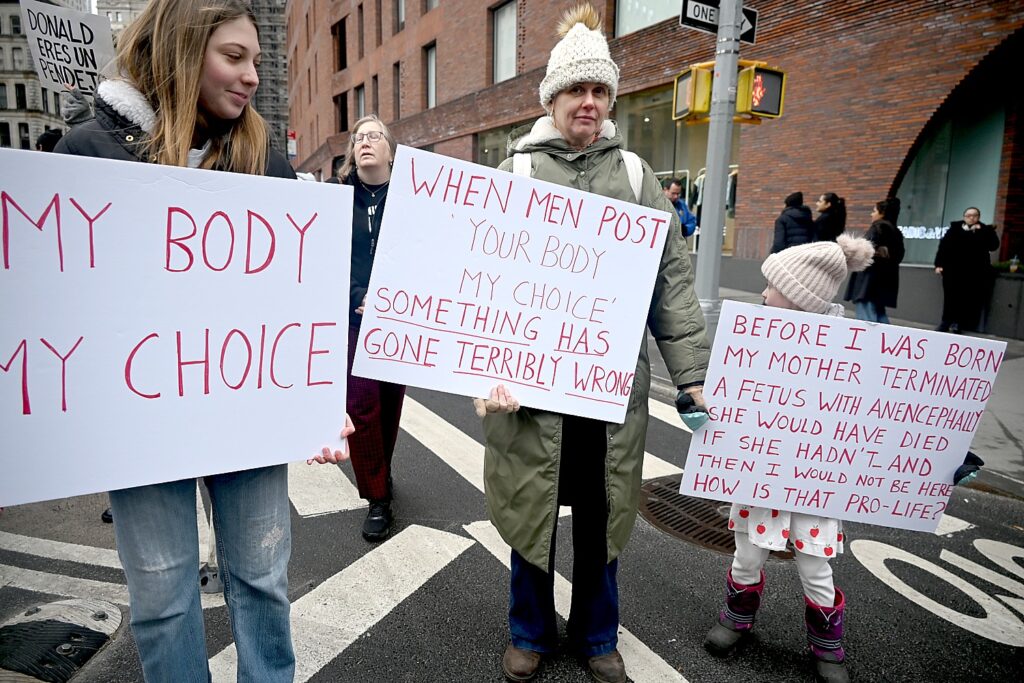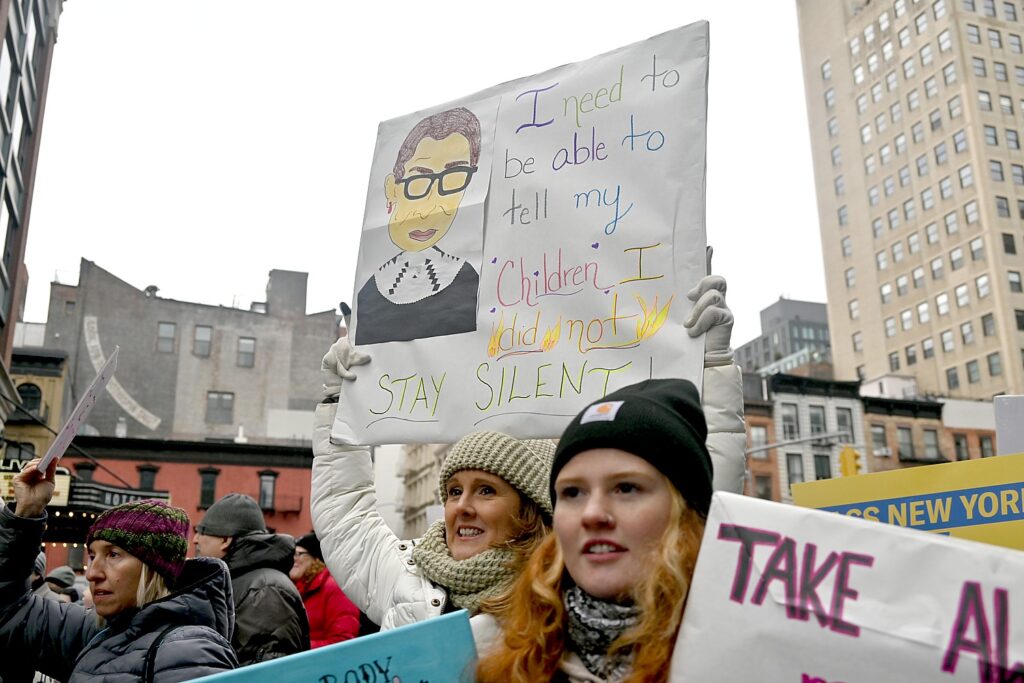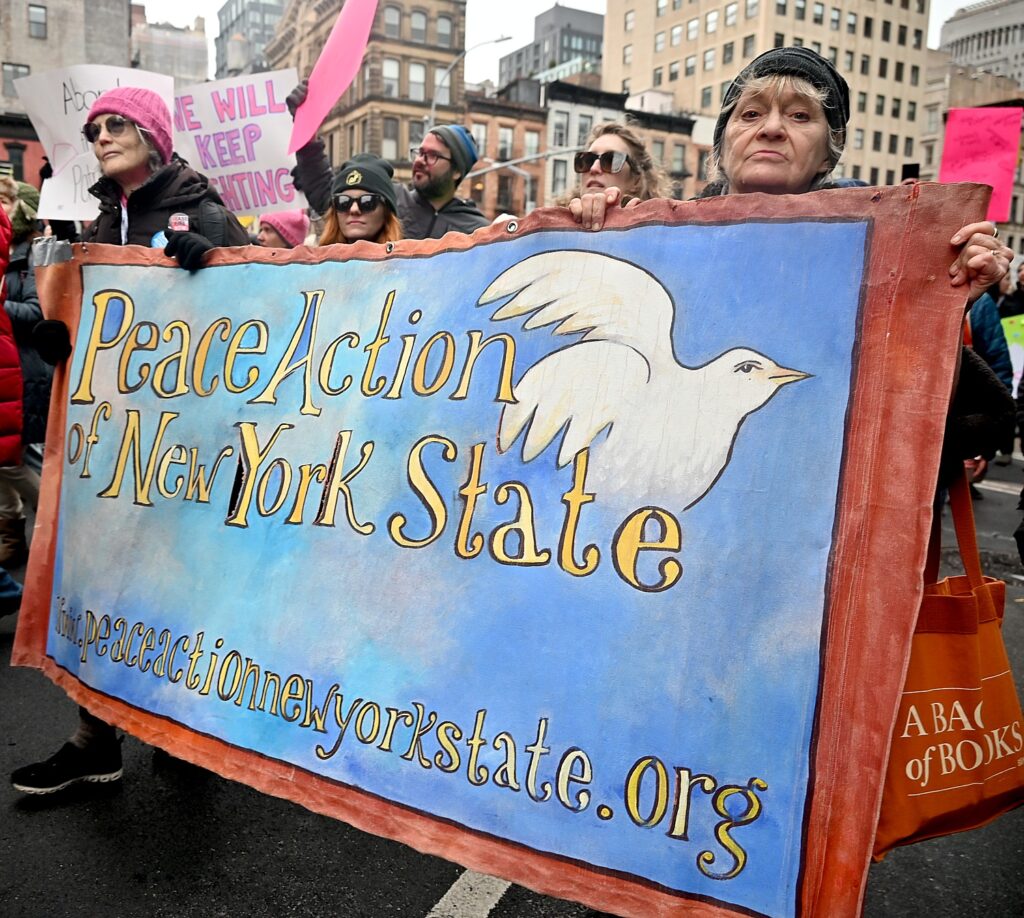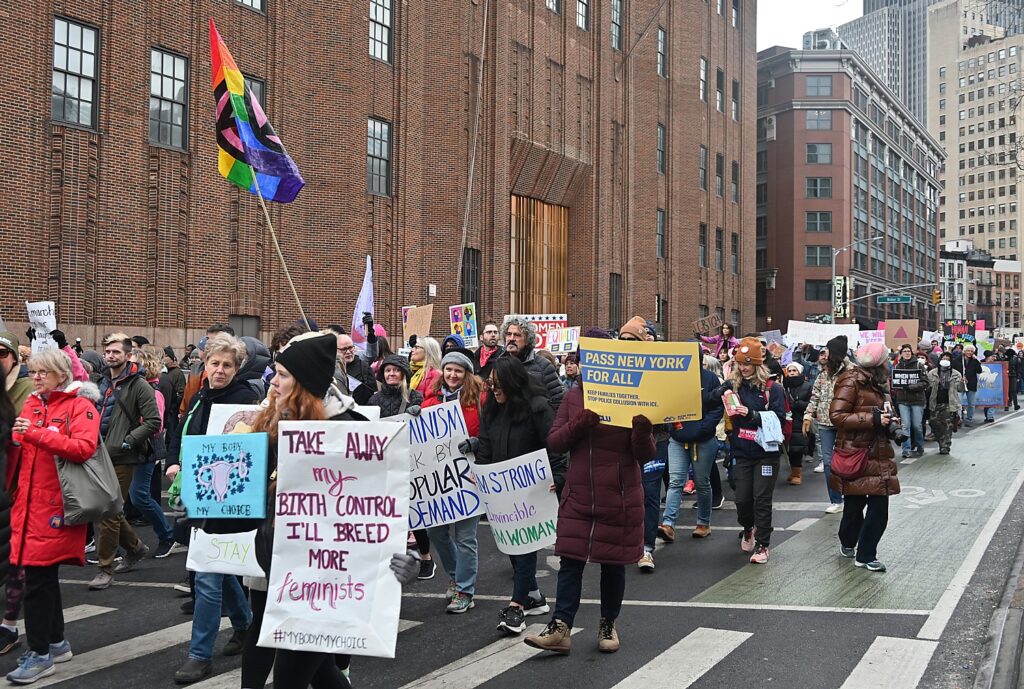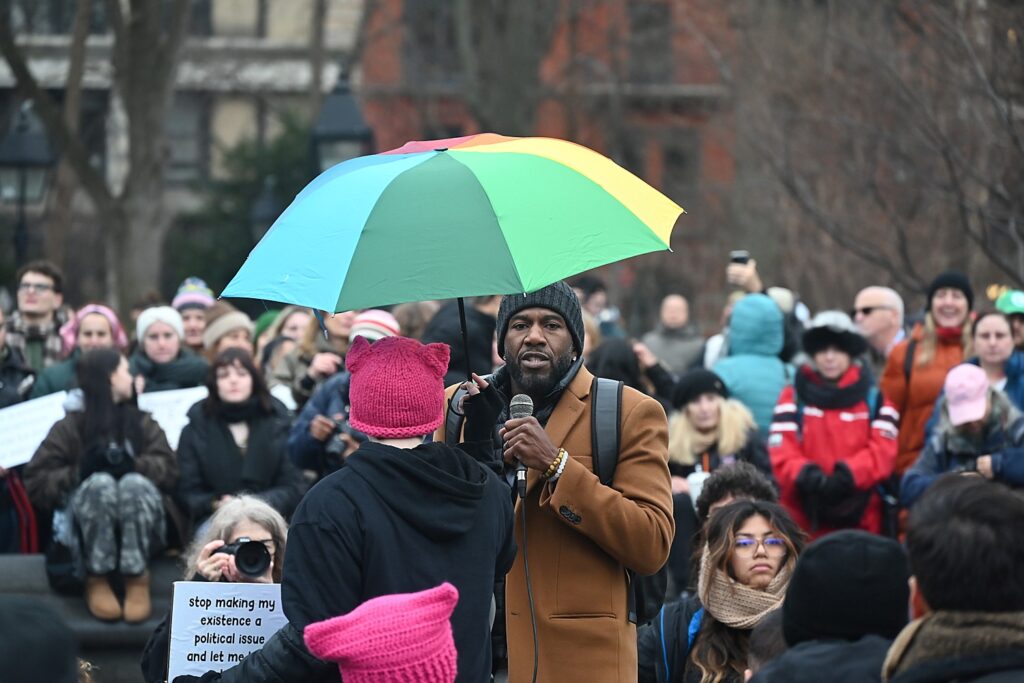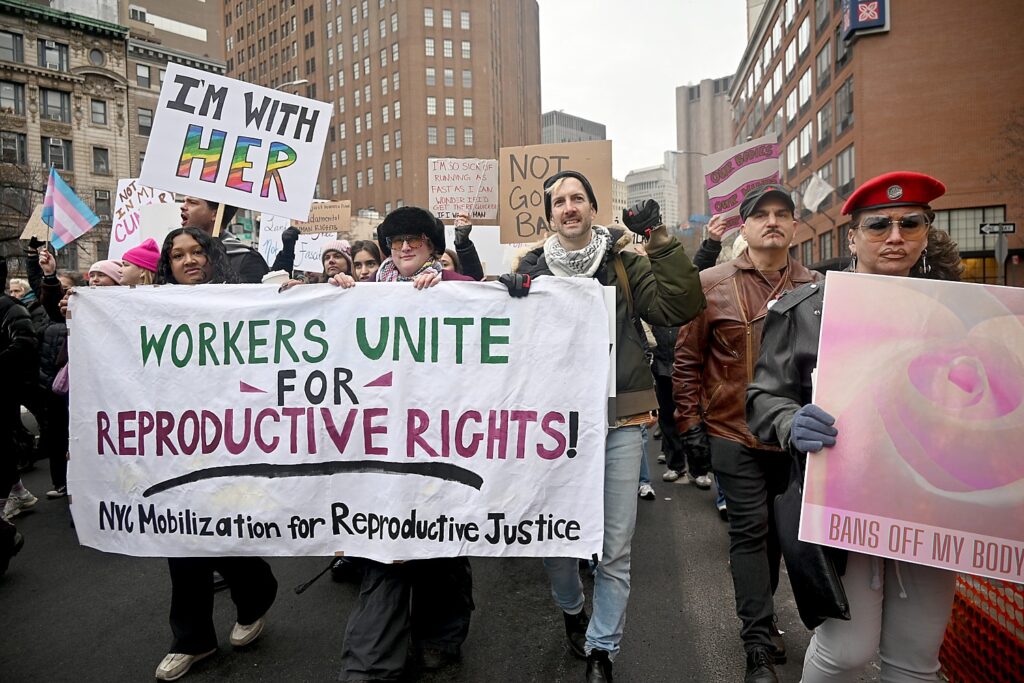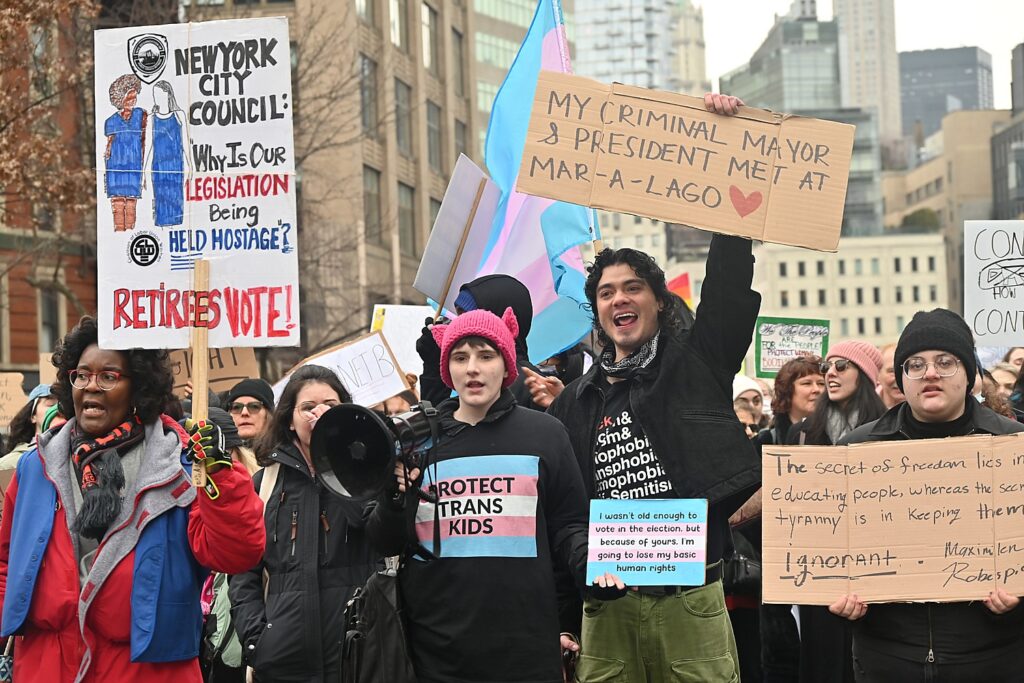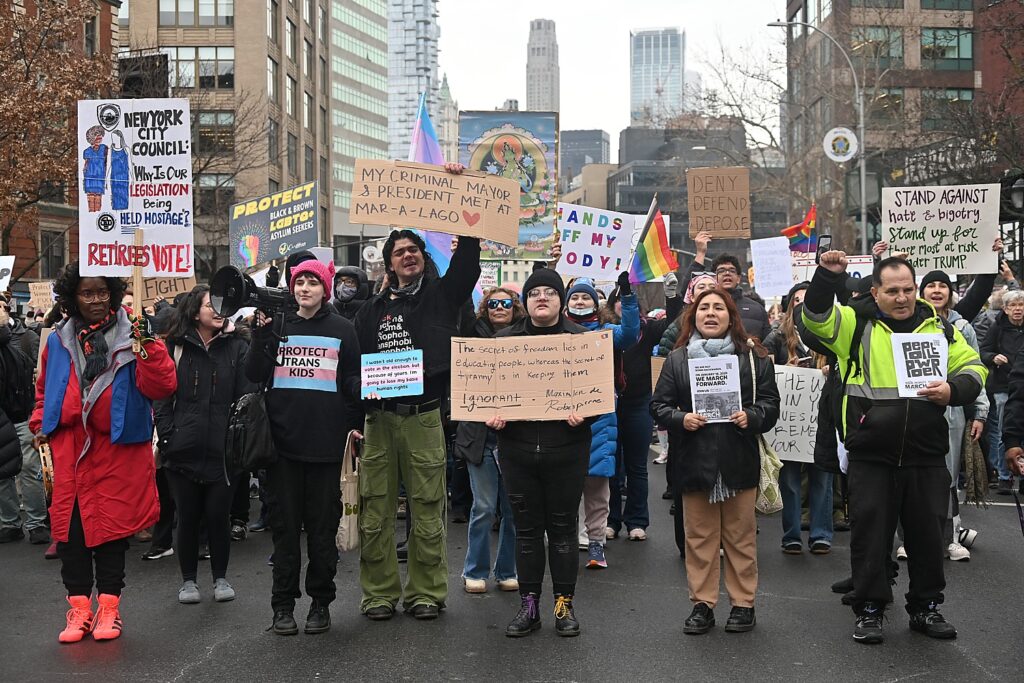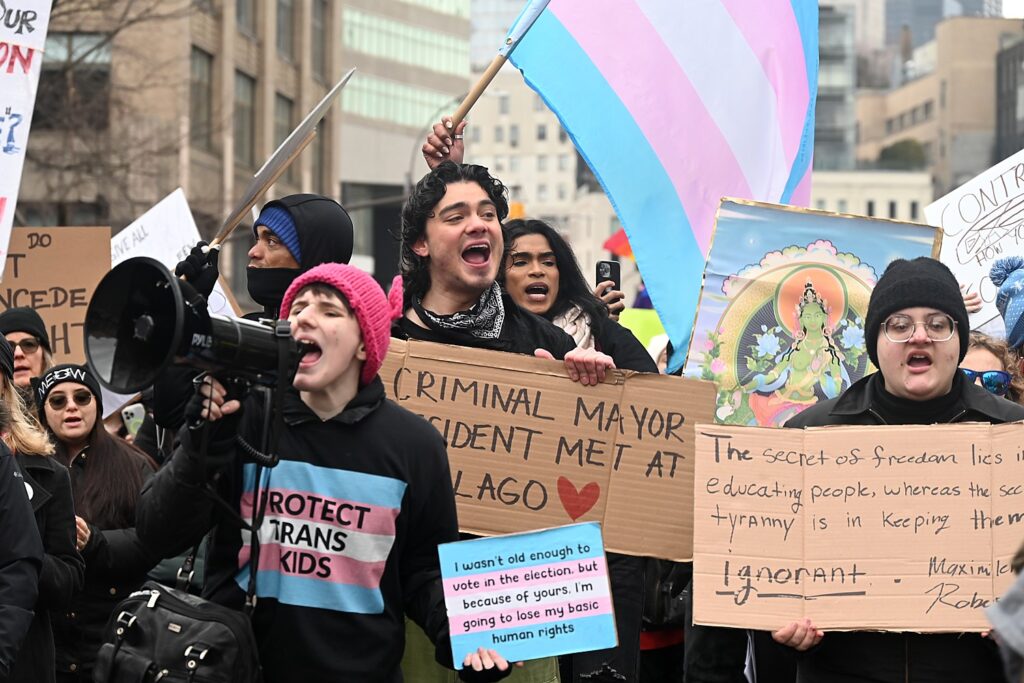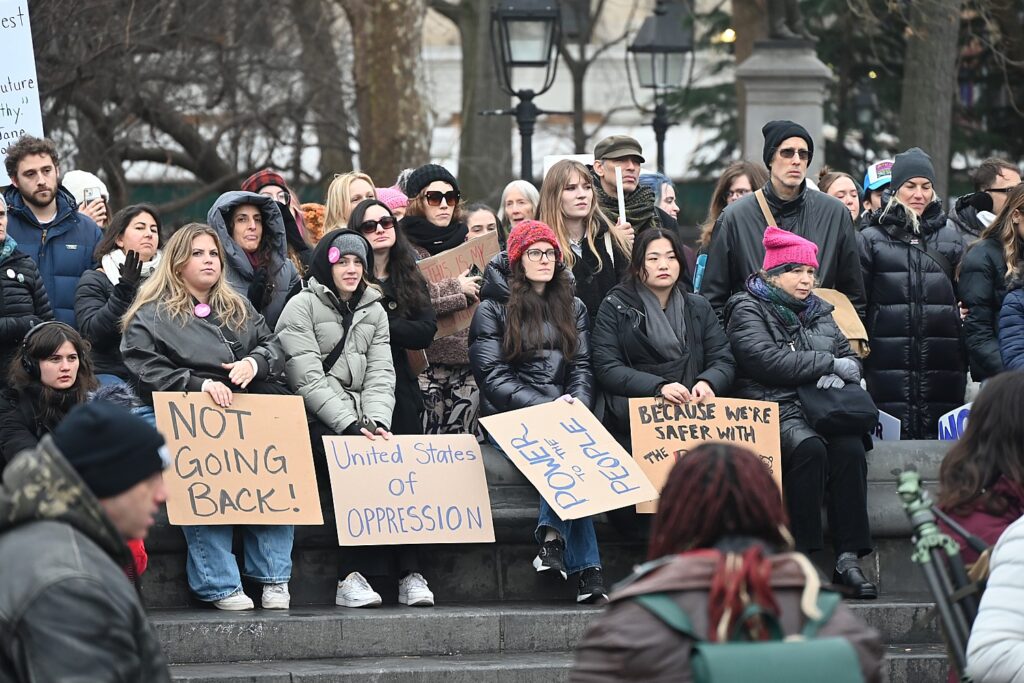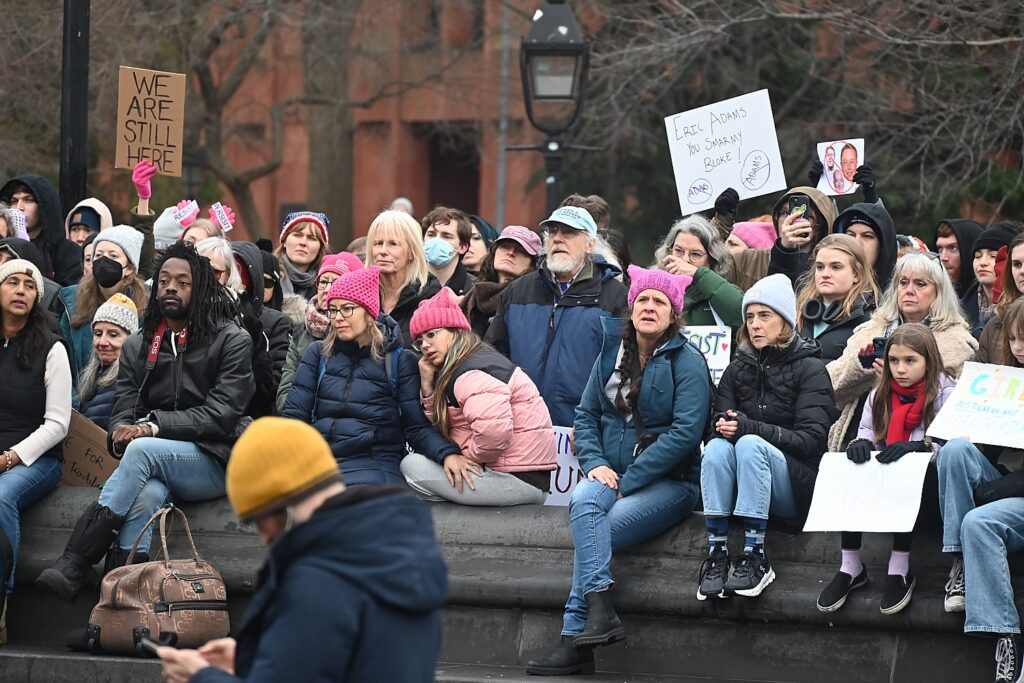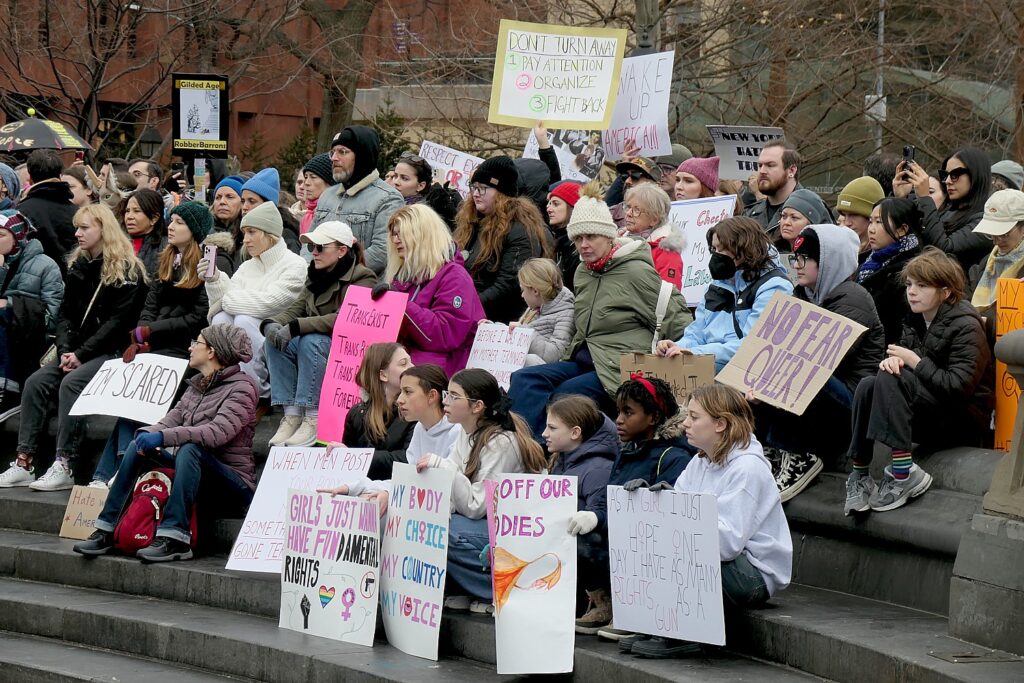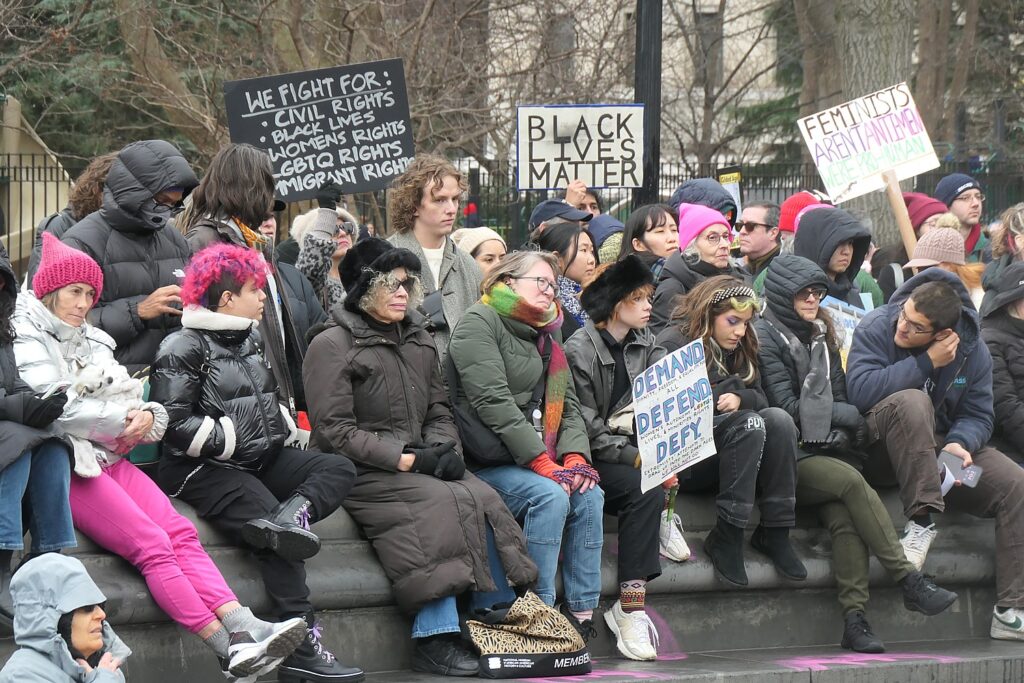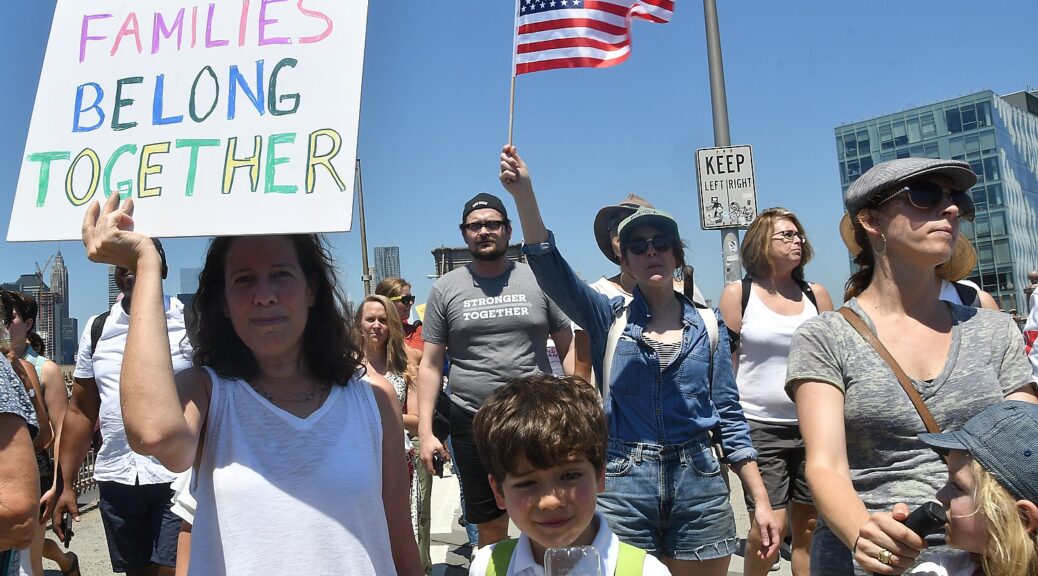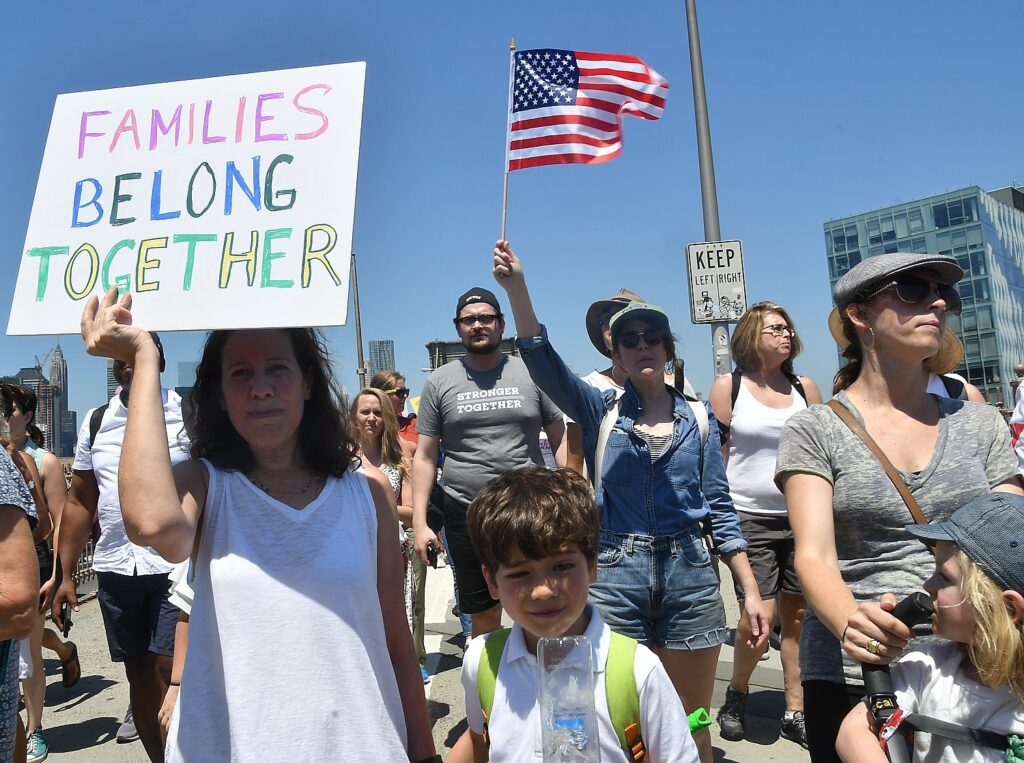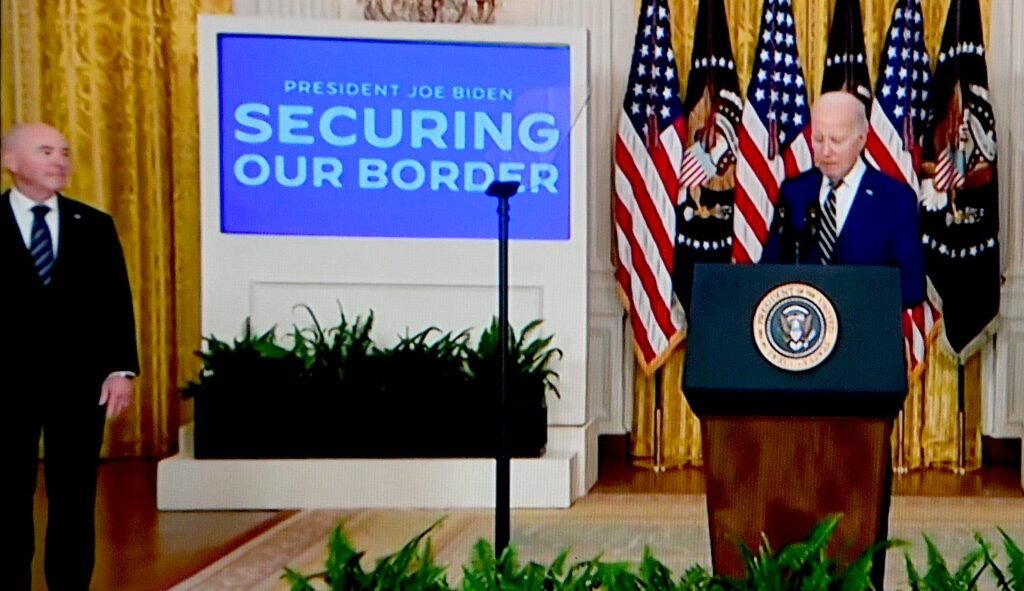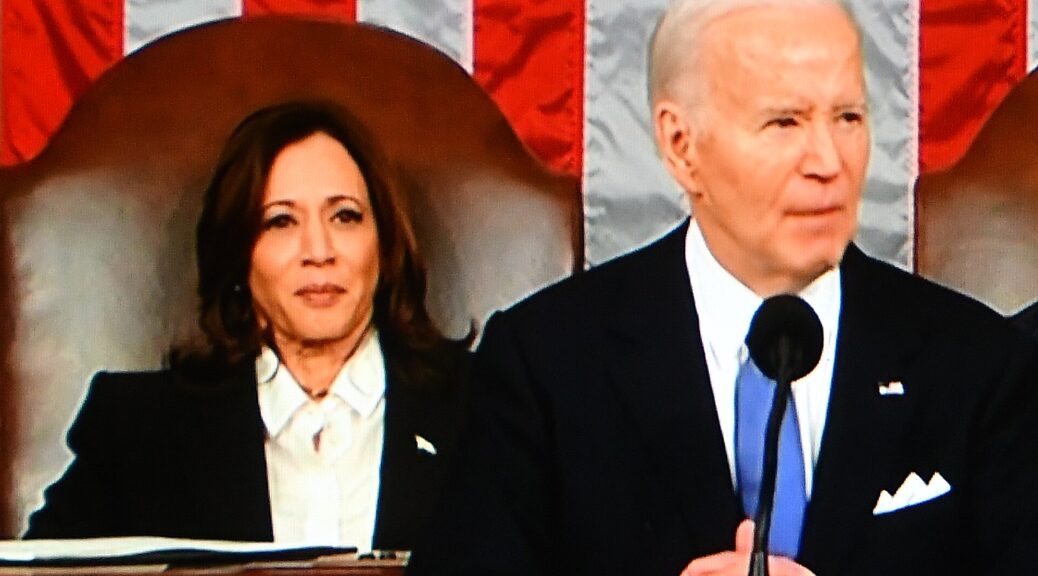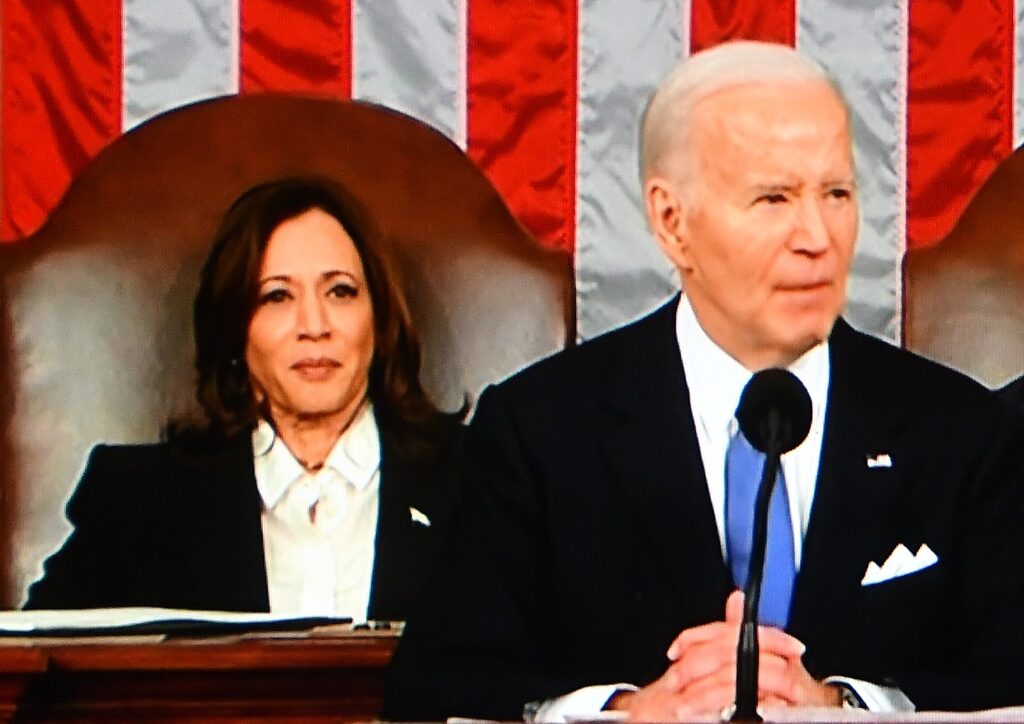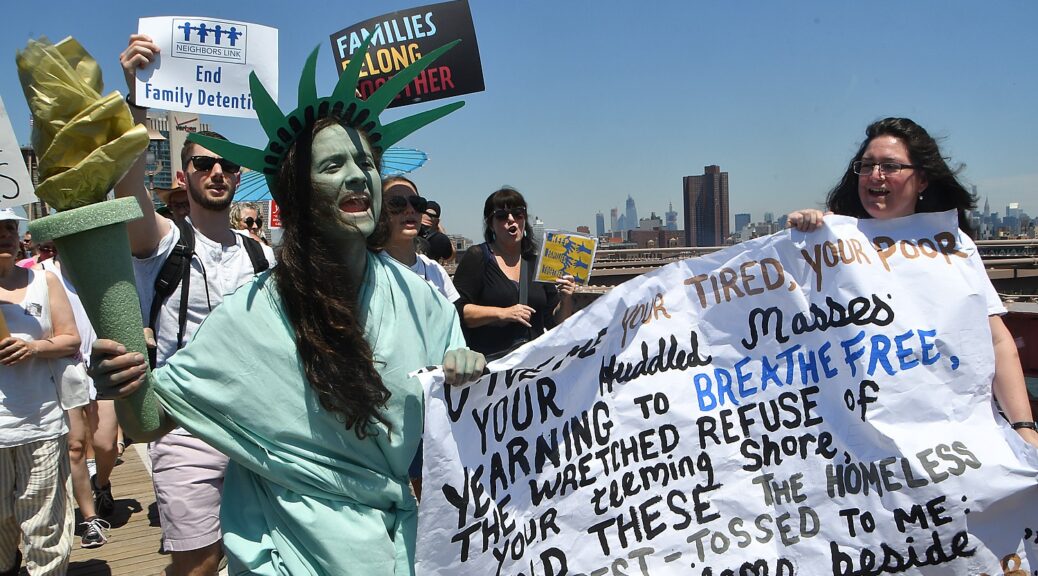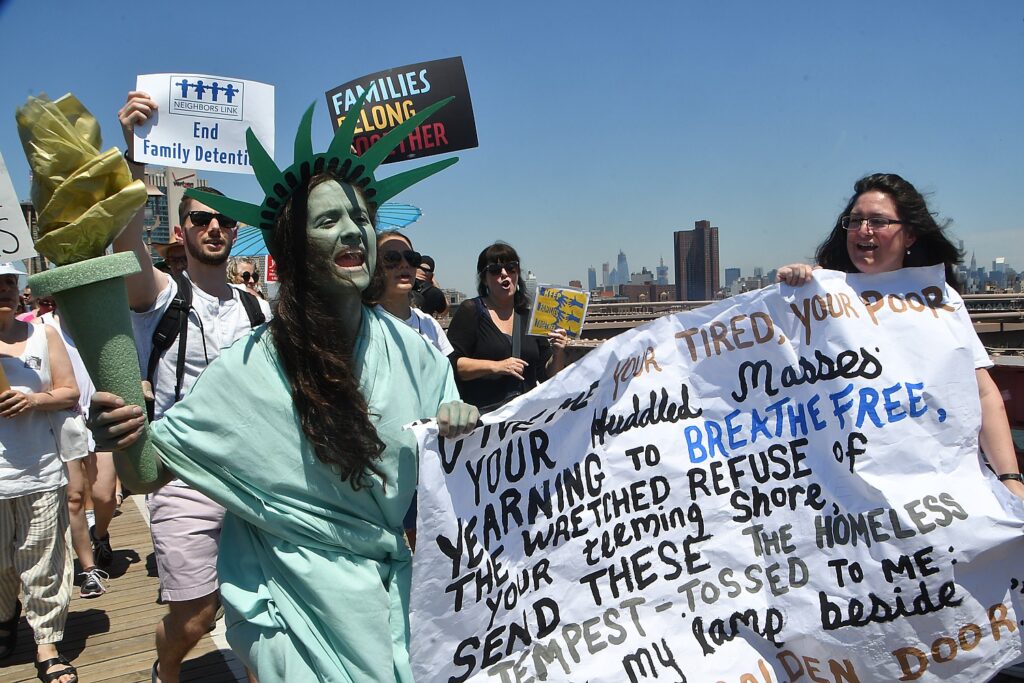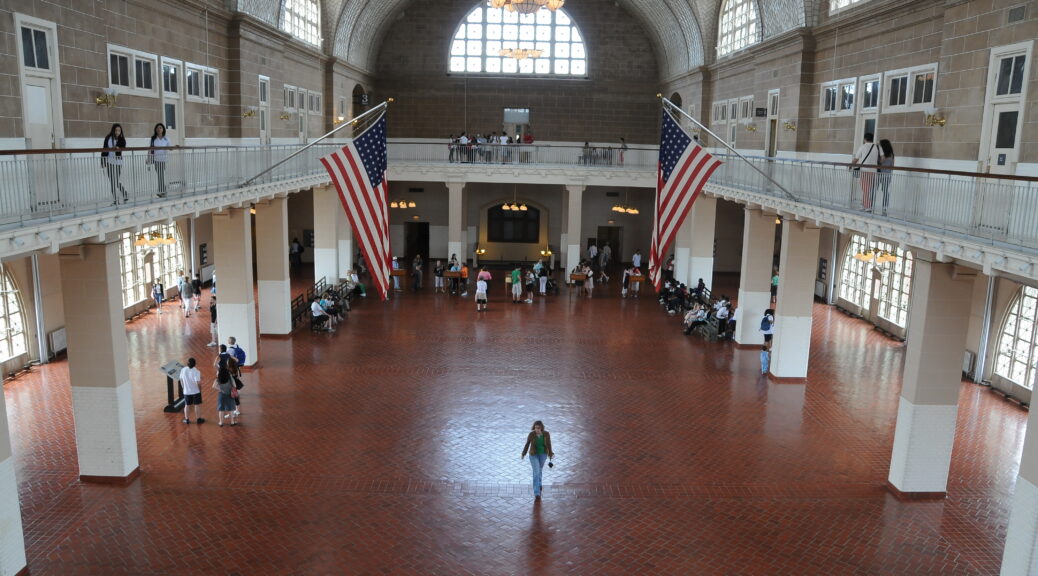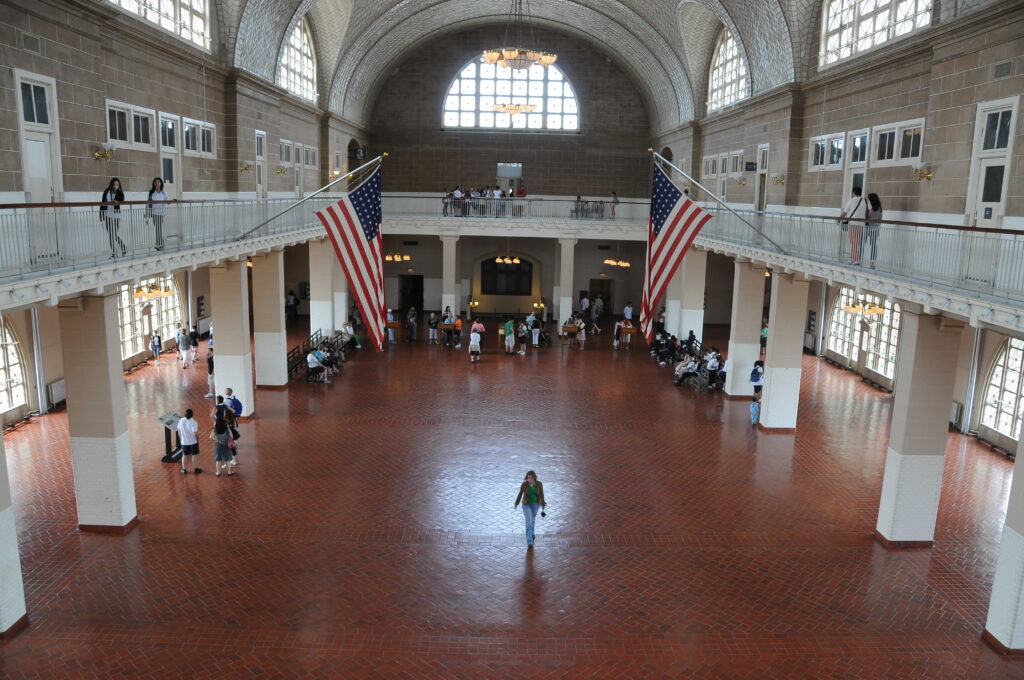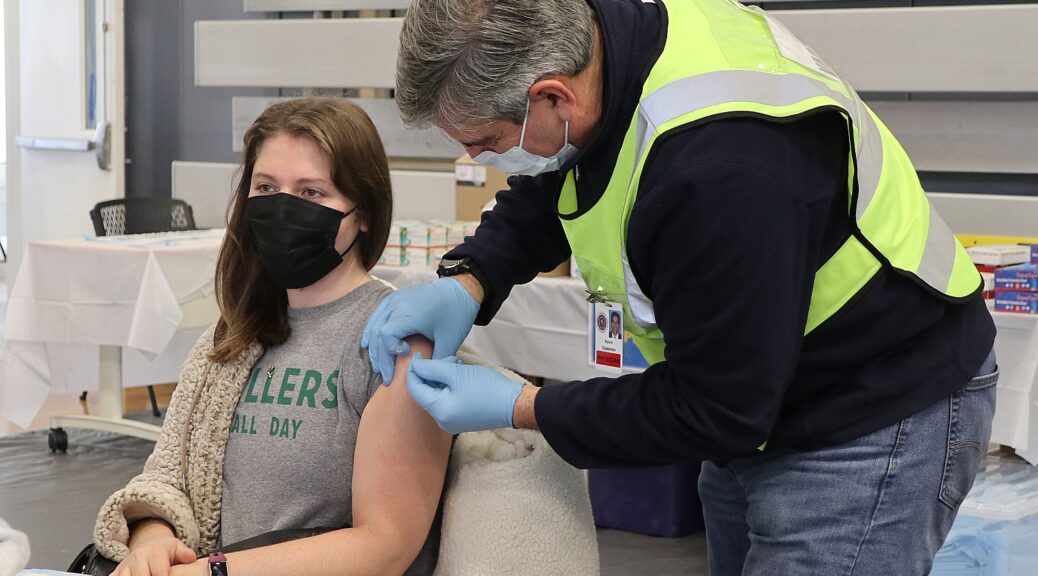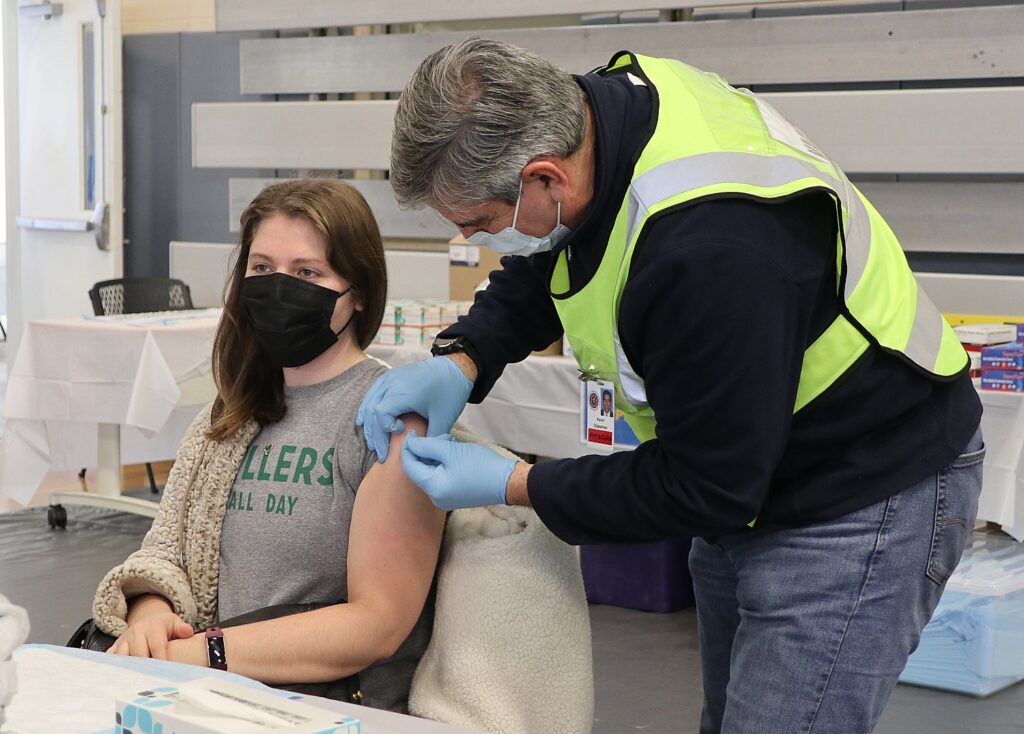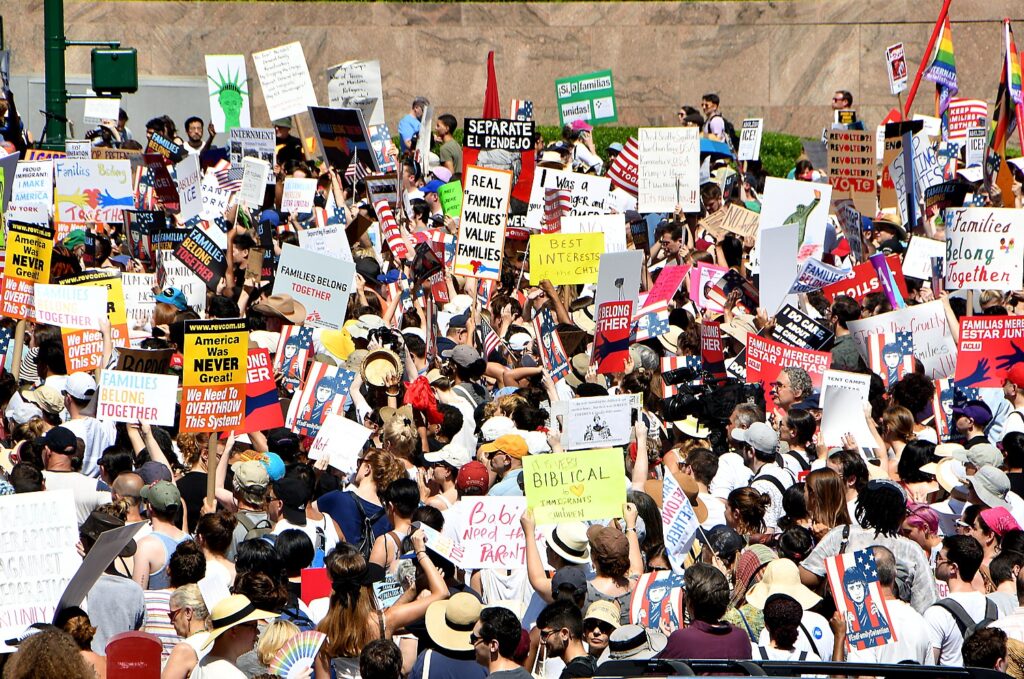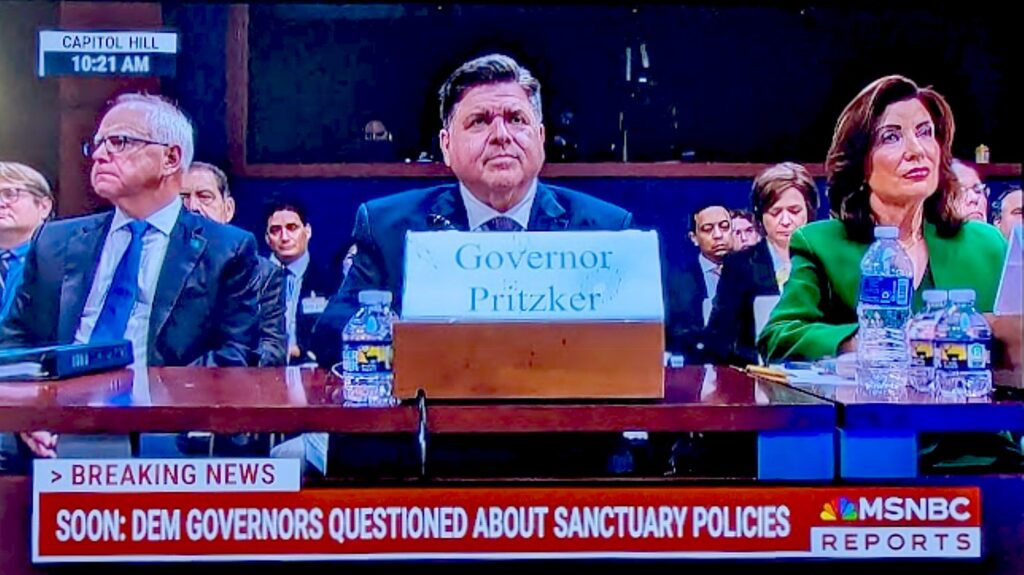
I sure hope that Governor Kathy Hochul and Illinois Governor J.B. Pritzer, appearing at a grilling by Republican House members intended to link sanctuary city policies to crime, noted the tens of thousands of migrants dumped into their cities and villages by Texas Governor Greg Abbott and Florida Governor Ron DeSantis who illegally trafficked these people using lies to get them on buses, then dumping them without giving any notice in order to maximize the distress and cause chaos for Democratic mayors and governors.
And Democrats should note that the reason there are so many individuals do not have legal status is because Republicans have blocked every attempt at immigration reform, including funding to increase border security in 2024, following Trump’s orders. Now Trump’s thugs are going after anyone who looks Latino, including tourists, American citizens, and ending legal status for students, visa holders and those here to escape some calamity.
NY Congresswoman Elise Stefanik used the opportunity to audition for her run for governor, attacking Governor Hochul. But Hochul defended her handling of migrants.
Here is her opening statement to the House Committee on Oversight and Government Reform, and a memo laying out the facts and background of the state’s position on immigration and handling of the migrant crisis and crime: – Karen Rubin, editor, News & Photo Features.
Chairman Comer, Ranking Member Lynch, and Members of the Committee, as we speak the streets of an American City have been militarized over the objections of the Governor. This is nothing short of a flagrant abuse of power, an assault on our American values.
My views on immigration are simple and direct — our nation needs secure borders. Our nation needs comprehensive immigration reform from this Congress. Our state laws dictate that we cooperate with ICE in criminal cases. And our values dictate that we treat all law-abiding families with dignity and respect.
The America I believe in is a nation of laws and a nation of immigrants — abandoning either threatens the very foundation on which our great country was built. For 400 years New York has prospered from hard-working newcomers — people like my grandparents who fled poverty in Ireland — they had the same American Dream that immigrant families have today. They’re not here for handouts. They want to work, earn their place and raise their families.
Yet every day we see another story of children ripped from the arms of their mothers. Wives separated from their husbands. Families arrested while attending legal immigration appointments. Not long ago, in the small town of Sackets Harbor, New York masked and armed ICE agents stormed into a home before dawn, abducted a mother and three children — including a third grader. They were cast into a living hell in a detention facility in Texas. I immediately contacted Border Czar Tom Homan and demanded their release.
In Jefferson County, where more than 60 percent of voters supported Donald Trump, people protested in the streets. Local Republican lawmakers, business owners, and school leaders all spoke out. Finally, after nearly two weeks the family was returned home.
In New York, we understand the difference between going after criminals and traumatizing law-abiding families.
Now some will use this hearing to stoke fear but I’m here to give you the facts. New York has managed an unprecedented influx of migrants because of a broken border.
And yet at the same time our state has become stronger and safer.
Today, New York State has the lowest homicide rate among the nation’s ten largest states. We’ve achieved this not with indiscriminate roundups, not by tearing apart innocent families, but by investing over $2.6 billion in public safety. By engaging in smart, targeted policing and by partnering with federal agencies to apprehend and deport serious criminals.
Since I became Governor we’ve cooperated in handing over more than 1,300 convicted criminals to ICE. What we don’t do is enforce civil immigration violations — that’s the federal government’s job.
New Yorkers need their State Troopers seizing guns and drugs and patrolling highways. States like mine are doing our part but we can’t be expected to fix this nation’s broken immigration system.
The very people who go on cable news to rail about ‘chaos at the border’ are the ones who torpedo bipartisan immigration reform each and every time it’s within reach.
So here’s my message: If you truly care about public safety — if you truly care about the economy — if you truly care about human dignity then sit down, negotiate and deliver real reform. Secure the border. Revive legal pathways. Let people work.
At the end of today, I’ll go home and do my job of keeping New Yorkers safe. I hope you’ll do yours too.
TO: Interested Parties
FROM: Office of Governor Kathy Hochul
DATE: June 12, 2025
RE: Governor Kathy Hochul’s Appearance Before the U.S. House Committee on Oversight and Government Reform
Today, Governor Hochul is voluntarily appearing before the United States House Committee on Oversight and Government Reform to participate in a hearing on immigration policy.
During this hearing, you can expect to hear Governor Hochul explain how she’s keeping New Yorkers safe. Her position is clear: she supports strong, secure borders and comprehensive immigration reform. And throughout her time as governor, she has proven we can welcome individuals who wish to work and contribute to New York, while holding anyone who threatens public safety accountable.
Unfortunately, based on certain Members’ previous statements to the media, it seems very likely that this hearing will be derailed by wild accusations, twisted characterizations and flat-out falsehoods. This memo lays out the key facts on Governor Hochul’s record on public safety and on immigration policy. Let’s take a look:
FALSE CLAIM: New York is a sanctuary state that hinders the ability of federal law enforcement to arrest and remove violent criminals from its streets.
FACT: There is no sanctuary in New York for people who commit crimes. New York is committed to cracking down on gang members and violent criminals, and State officials cooperate with ICE and CBP in many circumstances.
-New York State can and will work and coordinate with federal immigration officials when:
-There is an active criminal investigation.
-An individual has been convicted of a New York State crime.
-An individual is suspected of an immigration crime.
-Coordination with federal immigration is relevant to the investigation of a crime committed in New York State.
-An individual is suspected of a crime with potential multinational dimensions, such as participation in international drug cartels and gangs.
-The Department of Correction and Community Supervision has handed over 1,300 non-citizen incarcerated individuals to ICE at the completion of their sentences since Governor Hochul took office in 2021:
| Start Date | End Date | Released to ICE | ICE Did Not Pick Up |
| 8/24/2021 | 12/31/2021 | 119 | 15 |
| 1/1/2022 | 12/31/2022 | 353 | 50 |
| 1/1/2023 | 12/31/2023 | 318 | 18 |
| 1/1/2024 | 12/31/2024 | 395 | 22 |
| 1/1/2025 | 5/30/2025 | 158 | 15 |
| TOTAL | 1,343 | 120 | |
Source: NYS DOCCS records
–Justice.gov: Pakistani National Extradited to Face Charges in Connection with Plot to Carry Out ISIS-Inspired Mass Shooting at Jewish Center in New York City
-“A Pakistani citizen residing in Canada, Muhammad Shahzeb Khan, 20, also known as Shahzeb Jadoon, was extradited to the United States on June 10, in connection with an indictment filed in the Southern District of New York.”
-“State Police assigned to the Task Force played a critical role in the investigation of the subject and his movement toward the U.S. from Canada. Through partnership with colleagues at the FBI, CBP and Canadian law enforcement, he was ultimately arrested by Canadian authorities before he could get into the United States.” [Governor.ny.gov]
–Ice.gov: ICE New York City, partners arrest illegal alien wanted in home country for homicide
-“On Feb. 2, 2018, authorities in Santo Domingo, Dominican Republic, issued a warrant for Cruz’s arrest for the offense of homicide, which went international six weeks later. ICE New York City received notification March 16 this year.”
-“The New Rochelle Police Department arrested Cruz for having improper plates and impounded his vehicle May 17. The New Rochelle Police Department released Cruz on his own recognizance prior to realizing that he was an international fugitive wanted for homicide. Upon receiving this information, the police department immediately notified ICE New York City, which — along with federal partners — arrested Cruz.”
–Ice.gov: ICE Buffalo investigation nets 30-year sentence for New York man on child exploitation charges
-“A New York man was sentenced for child exploitation charges following an investigation by U.S. Immigration and Customs Enforcement with support from New York State Police.”
–Ice.gov: Pennsylvania man sentenced for role in burglary of 55 UPS warehouses following ICE investigation
-“Agencies nationwide supported ICE HSI Newark in the investigation leading to the sentencings… New York agencies include the New York State Police […].”
FALSE CLAIM: Crime is at record-high levels in New York and the City and State are in chaos.
FACT: Among the most populous states, New York State and New York City are some of the safest jurisdictions in the country with crime rates that have fallen since Governor Hochul took office in 2021.
-New York State has the LOWEST homicide rate of the top 10 most populous states in the U.S. and HALF the national average; its homicide rate is lower than Florida, Texas, Georgia and Arizona among other states.
-New York City has the SECOND LOWEST crime rate of the top 10 most populous cities in the U.S., lower than Houston, Dallas and San Antonio among other cities.
-Comparing the first five months of the year, murders are down 41% since 2021:
-Comparing the first five months of the year, shootings are down 54% since 2021:
–NYC.gov: NYPD ANNOUNCES RECORD LOW SHOOTINGS AND MURDERS FOR THE FIRST FIVE MONTHS OF 2025
-“Police Commissioner Jessica S. Tisch today announced that from January 2025 through May 2025, New York City experienced the lowest number of shootings and murders in recorded history and set the record for the lowest number of shootings and murders in May. New York City also experienced the safest Memorial Day on record, with the lowest number of shootings ever across the entire weekend and the first Memorial Day Sunday with zero shootings. These historic numbers helped drive the eighth straight month of declines in major crime categories with a 4.9% drop in May 2025 compared to the same time last year.”
–NYC.gov: NYPD ANNOUNCES HISTORIC CRIME REDUCTIONS IN FIRST QUARTER OF 2025 WITH FEWEST SHOOTING INCIDENTS IN RECORDED HISTORY
-“These historic declines in violence were accompanied by major crime reductions in every patrol borough with index crime down 10.9%. In this quarter, robbery dropped 22.8% (3,074 vs. 3,981), grand larceny declined 13.7% (10,226 vs. 11,855), auto theft was down 11.9% (2,773 vs. 3,148), burglary was down 4.4% (3,043 vs. 3,184), and felony assault fell 2.7% (6,361 vs. 6,535).”
–cdc.gov: According to the latest available CDC data, New York State has the lowest homicide rate of the 10 most populous states in the country.
FALSE CLAIM: New York’s leaders are soft-on-crime and have not taken action to protect the people of the state.
FACT: Governor Hochul’s top priority is public safety and she has invested over $2.6 billion in gun violence prevention and other public safety initiatives.
–Times Union: Hochul unveils $252B budget with focus on cost of living, crime
-“Her budget would include $77 million to increase police on subway platforms and on trains during overnight hours. She is also calling to expedite the expenditure of $400 million toward continuing the installation of fixed cameras in prisons across the state’s correctional system, with nearly $20 million allocated for expanding body-worn cameras for correction officers.”
–WKBW: Gov. Hochul announces millions in public safety funding for local law enforcement agencies
-“Gov. Hochul announced Wednesday $50 million of funding for public safety efforts across the state.”
-“$30 million of the funding will go towards new technologies and equipment for local law enforcement agencies, such as body cameras, storage, and software.”
–Everytown: VICTORY FOR GUN SAFETY: Governor Kathy Hochul, New York Lawmakers Include More than $350 Million in FY25 Budget Agreement for Gun Violence Prevention Programs; Moms Demand Action, Students Demand Action Respond
-“The New York chapters of Moms Demand Action and Students Demand Action, both part of Everytown for Gun Safety’s grassroots network, released the following statement applauding Governor Kathy Hochul, Senate Majority Leader Andrea Stewart-Cousins, Speaker Carl Heastie, and lawmakers for agreeing to a budget that sustains New York’s historic commitment of more than $350 million to fund gun violence prevention efforts across the state and invests in new efforts to combat violence this past weekend.”
–NY1: Subway safety plans in state budget include mental health services, more platform barriers
-“The governor touted securing $77 million in the budget to pay for the NYPD overnight patrols on every train, which the city also has to pay for. That ends on June 30 and it’s unclear whether they will continue. ‘I’ll continue that funding, and making sure we have the resources whether it’s through the city or the state or combined,’ Hochul said.”
–Statescoop: New York governor announces $127M in new funds for public safety tech
-“New York Gov. Kathy Hochul’s office this week announced that police departments and sheriffs’ offices outside New York City will receive $127 million for crime prevention tools and other new technology. Nearly 400 law enforcement agencies across New York will receive funding through the state’s Public Safety Grant after filing last year for additional funds to purchase new equipment. According to the grant funding announcement, police departments and sheriffs’ offices will use the funding to purchase license plate readers, mobile and fixed camera systems, computer-aided dispatch systems, software, drones, gunshot-detection devices and “smart” equipment for patrol vehicles and police officers.”
–NY Times: Building upon Governor Hochul’s record investments in proven crime prevention initiatives, the FY26 Enacted Budget includes essential, commonsense changes to New York’s Discovery Laws to support survivors, hold perpetrators accountable and safeguard the right to a fair and speedy trial. The changes will prevent cases from being thrown out over technical errors and eliminate dismissals and disruptions that have re-traumatized survivors of domestic violence and other serious crimes. There is $135 million allocated for prosecutors and defenders to ensure compliance with discovery, a year-to-year increase of $15 million.
FALSE CLAIM: New York takes a lenient approach to immigration while forcing border states like Texas to manage the influx of new arrivals.
FACT: New York State shares a border with Canada and has invested additional resources to secure its northern territory as well as stop transnational gangs and the flow of fentanyl.
–Newsday: New York allocates $8 million for Canada border security.
-“Gov. Kathy Hochul and state lawmakers agreed to earmark $8 million in the state budget for security along the U.S.-Canadian border, Hochul said in announcing a “general agreement” on a budget deal Monday night.”
-“The funds will “increase safety,” the Democrat said at a news conference, adding it will allow the state to provide “the dedicated law enforcement and technology to stop transnational criminal organizations and the trafficking of guns, drugs and people.””
-“The funding, part of a $254 billion budget, is focused on the “land border” with Canada near Plattsburgh, Jackie Bray, commissioner of the state Division of Homeland Security and Emergency Services, told Newsday. The funds will go toward additional state police, license plate readers and drones and will be “rolled out over the next year,” she said.”
–NYP: Hochul blasts move to cut border crossing hours
-““While the Biden-Harris Administration has achieved measurable success in enhancing southern border security, New York is experiencing a dramatic increase in irregular crossings along our northern border,” she said in a statement. “We need to expand enforcement at the northern border today and I call on the U.S. Customs and Border Protection to reverse this decision.””
-“New York has redirected $5 million in federal State Homeland Security Program funding to enhance security efforts along the state’s border with Canada, Hochul said, including by purchasing additional tools to support investigations into transnational criminal organizations.”
-““While these important resources will help keep New Yorkers safe and manage the spike in illegal border crossings, greater federal support is crucial to meet the magnitude of migration we are seeing,” she said.”
–North County Now: Hochul called on the Department of Homeland Security to expand immigration enforcement at New York’s border with Canada
-““I have previously raised my concerns in meetings with the Biden-Harris Administration, and write to once again request the Department of Homeland Security immediately direct staffing and resources to expand enforcement activities along the U.S.-Canada border, and in light of this weeks actions I ask you to immediately reverse the decision to suspend 24/7 staffing along our northern border at critical locations,” she wrote.”
-“Hochul pointed to the rising number of illegal border crossings this year as a primary concern, saying it should warrant “a firmer response.” She said the historically lax policies regarding the northern border are also to blame in this case. Hochul pointed to “long-standing immigration policies of the U.S. and Canada” as a primary reason the northern border has become an “increasingly popular route for non-citizens seeking entry into the U.S.””
FALSE CLAIM: Crime on the New York City subways is spiking and commuters are abandoning the system.
FACT: Subway crime is down, and Governor Hochul is continuing to invest in law enforcement and physical infrastructure to keep commuters safe – all while ridership continues to grow.
–NYP: NYC subway crime drops to pre-pandemic levels after cops flood system: ‘Fear has really gone down’
-“Tisch, during a news conference with Mayor Eric Adams unveiling the city’s first-quarter crime statistics, said major offenses overall in the subways have dropped 18% — the second-lowest level in 27 years.”
-“There have been zero murders in our subways this quarter, the first time that that has happened since 2018,” she said, referring to the period covering the first three months of the year.”
-“Tisch responded by deploying 200 cops to trains and platforms, as well as flooding hundreds more to transit hubs in order to support a Gov. Kathy Hochul-hatched plan to put two officers on every overnight subway.”
–amNY: Subway crime continues to fall, even as high-profile cases make NYC headlines
-“Subway crime in NYC is still on a downward trend in 2025 even after a slight rise in April compared to the same month last year, according to the latest police data. “
-“Over a 28-day period that ran through April 20, transit crime increased 9% compared to the same period in 2024 — 146 crimes this year vs. 134 last year. Focusing on the middle of the month, transit crime jumped nearly 30% during the week of April 14-20 compared to the period in 2024. There were 27 crimes in the city’s public transit system during those seven days last year, compared to 35 throughout the same week in 2025.”
–PIX11: Governor Hochul has invested in cameras and other safety equipment
-“Hochul directed the MTA in 2022 to install surveillance cameras on every subway car. The governor described it as a major undertaking that was finally completed on Wednesday. “We have 100% of subway cars now equipped with cameras,” Hochul said. “We have thousands of cars, thousands of cameras … If you’re thinking of committing a crime on the subway, we’re watching and you will be caught.””
–NYT: “Ridership is up across all modes of public transit.”
-“While the number of cars on the road is down, transit ridership is up, suggesting many commuters have switched. From early January through mid-April, compared with the same time last year, ridership has increased on the bus and the subway for the M.T.A. It’s also up on the Long Island Rail Road, the Staten Island Railway and the Metro-North commuter lines that serve the northern suburbs and parts of Connecticut.”
–amNY: Congestion pricing: LIRR and Metro-North see increased ridership since Jan. 5
-“Suburban railways Metro-North and the Long Island Rail Road (LIRR) saw a dramatic increase in ridership every day since the launch of congestion pricing on Jan. 5, according to state data.”
-“Metrics on the New York State open data portal show that ridership on both commuter lines is way up from the same period last year — before the tolls were in effect.”
FALSE CLAIM: New York Democrats aren’t serious about addressing immigration and are using this issue to blame their political opponents.
FACT: Governor Hochul has advocated for comprehensive immigration reform during the Biden Administration and the Trump Administration, and advocated for the bipartisan border bill that would have funded the largest investment in border security in American history.
–News 10: Gov. Hochul calls for passage of bipartisan Congressional bill
-“Governor Kathy Hochul is calling on New York Republicans in the U.S. House of Representatives to pass bipartisan legislation on immigration reform, if it passes in the Senate.”
-“It is absolutely essential that we get these changes,” Hochul said at a press conference on Monday.”
-“According to Hochul, the bipartisan bill in the U.S. Senate will make asylum laws tougher and provide states and localities $1.4 billion dollars.”
–AP: What’s in the bipartisan Senate package to aid Ukraine, secure U.S. border
-“The package would also send $20 billion to immigration enforcement, providing money to hire thousands more officers to evaluate asylum claims, add hundreds of more Border Patrol agents and help stop the flow of fentanyl.”
-Congressional Republicans, many of whom serve on the House Oversight Committee, did not support the bill at the behest of then-candidate Trump to score political points.
–Chairman Comer: “Americans expect Congress to push policies that secure the border, and I will not support legislation that fails to achieve this priority.This disastrous border bill by @POTUS & @SenSchumer doubles down on failed border policies & further incentivizes illegal immigration.”
–Rep. Jordan: “Joe Biden is not going to fix a problem that he purposefully created… One sentence. No money can be used to process or release into the country any new migrants… Let’s say ‘time out’ and let the American people decide how we want to deal with this in November, when we have President Trump — who actually had control of our border — against President Biden… Let the country decide.”
–Rep. Mace: “Is this a joke? The Senate ‘border security’ The New York chapters of Moms Demand Action and Students Demand Action, both part of Everytown for Gun Safety’s grassroots network, released the following statement applauding Governor Kathy Hochul, Senate Majority Leader Andrea Stewart-Cousins, Speaker Carl Heastie, and lawmakers for agreeing to a budget that sustains New York’s historic commitment of more than $350 million to fund gun violence prevention efforts across the state and invests in new efforts to combat violence this past weekend.bill if we’re calling it that, is worse than previously thought.”
–Rep. Greene: “Pres Trump has the best border policies and the best statement on the WORST America last border surrender bill! It’s DEAD ON ARRIVAL!!”
–Rep. Boebert: “This so-called border “compromise” bill reads like a compromise between the cartels, the human traffickers and Alejandro Mayorkas. They are all salivating reading this thing. No Republican should support this absolute amnesty monstrosity that fails to actually secure the border.”
–Rep. Luna: “Any Republican who votes for this will betray the American people.”
CLAIM: New York is standing idly by while antisemitism and hate crimes are committed with impunity.
FACT: Governor Hochul has made record investments to strengthen safety and security measures for organizations facing increased risk of hate crimes.
–SILive: N.Y. Gov. Kathy Hochul announces funding to organizations at risk of hate crimes or terrorism
-“Gov. Kathy Hochul announced a new state investment of nearly $63.9 million to strengthen safety and security measures at nonprofit, community-based organizations that are considered at risk for hate crimes or attacks due to their ideologies, beliefs or missions.”
-“Available through the Securing Communities Against Hate Crimes Program, the funding will support projects and cybersecurity improvements at 336 organizations throughout New York, according to an announcement issued Tuesday.”
–NYT: Gov. Hochul Announces $75 Million to Combat Hate Crimes in New York
-“Gov. Kathy Hochul of New York announced on Tuesday up to $75 million in grants for local police departments and houses of worship in response to an uptick in reported antisemitic attacks and hate crimes against Palestinians in the wake of the Israel-Hamas war.”
-“The state will also begin a review of the antisemitism and anti-discrimination policies in New York City’s public university system, while the State Police will expand its monitoring of social media to identify online threats on college campuses.”
-““You can vigorously oppose Israel’s response following the attack on their people, but still be vigorously opposed to terrorism, Hamas, antisemitism and hate in all of its forms,” Ms. Hochul, a Democrat, said in remarks that were streamed online. “We cannot allow any New Yorker to live in fear.””

